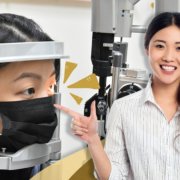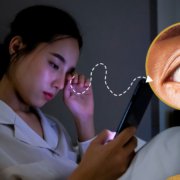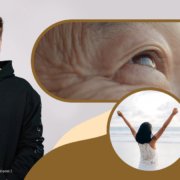Recent studies have shown a significant correlation between outdoor activity and myopia, a condition that affects the eyesight of millions of people worldwide. The prevalence of myopia has increased significantly over the past few decades, leading researchers to investigate possible causes. Evidence suggests that spending time outdoors may be a key factor in reducing the risk of myopia development. In this article, we’ll explore the scientific evidence linking outdoor activity to myopia, as well as practical tips on how to incorporate more outdoor time into your daily routine.
The connection between outdoor activity and myopia
Several theories have been proposed to explain the link between outdoor activity and myopia. One theory suggests that outdoor time may help reduce myopia risk by promoting dopamine release in the retina, which can help control eye growth. Another theory proposes that exposure to natural light and a wider range of distances outdoors may help prevent the elongation of the eye that leads to myopia.
Furthermore, outdoor activity may also be associated with a healthier lifestyle, including more physical activity and less screen time, which could also play a role in reducing the risk of myopia. Regardless of the mechanism, the evidence supporting the connection between outdoor activity and myopia is clear.
Encouraging children and adults to spend more time outside may be a simple and effective way to promote eye health and reduce the risk of myopia.
How does spending time outdoors protect our vision?
Spending time outdoors can provide a range of benefits for our eyesight. Firstly, exposure to natural light can be beneficial for our eyes. Natural light contains a broad spectrum of wavelengths that can help stimulate the production of important hormones and enzymes in the eye that promote good vision.
Secondly, spending time outdoors typically involves looking at objects at different distances, which can help exercise the muscles that control the shape of our eyes. This is particularly important for children, whose eyes are still developing and are more susceptible to the development of myopia. Additionally, spending time outdoors may also encourage more physical activity, which can improve overall health and reduce the risk of chronic diseases such as diabetes, which can have a negative impact on vision.
By providing a range of visual stimuli and promoting overall health, spending time outdoors can help protect our vision and promote good eye health.
What causes myopia?
Myopia, also known as nearsightedness, is a common condition that affects millions of people worldwide. The exact cause of myopia is not fully understood, but several factors have been identified as potential contributors.
One of the primary factors is genetics; individuals with a family history of myopia are more likely to develop the condition. Environmental factors, such as spending too much time indoors or engaging in activities that require prolonged near work (such as reading or using a computer), may also contribute to the development of myopia. Additionally, certain medical conditions, such as diabetes, can increase the risk of myopia.
While the exact cause of myopia may not be fully understood, it is clear that a combination of genetic and environmental factors can contribute to its development. Understanding these risk factors can help individuals take steps to reduce their risk of developing myopia and maintain good eye health.
Maximizing time outdoors
Maximizing time outdoors can provide a range of benefits for our overall health, including our vision. To make the most of your time outside, it’s important to find activities that you enjoy and that can help provide a range of visual stimuli.
For example, going for a walk or hike in nature can provide opportunities to look at objects at different distances, exercise the muscles that control the shape of our eyes, and reduce the risk of myopia. Additionally, participating in sports or other outdoor activities can provide opportunities for social interaction and physical activity, which can also be beneficial for our overall health.
To maximize the benefits of outdoor time, it’s important to find a balance between screen time and outdoor time, and to make a conscious effort to spend more time outside. By incorporating outdoor activities into your daily routine, you can help promote good eye health and improve your overall well-being.
Get outside!
Spending time outdoors is important year-round. Not only does it benefit your eyes, but it bolsters your overall health and wellbeing. So bundle up, and get outside when you can. Your eyes will thank you.
Treating myopia
Treating myopia typically involves correcting the refractive error in the eye, which can be done through the use of eyeglasses, contact lenses, or refractive surgery.
Eyeglasses and contact lenses work by altering the way light enters the eye, allowing for clearer vision. Refractive surgery, such as LASIK or PRK, reshapes the cornea to correct the refractive error. While these treatments can be effective in correcting myopia, they do not address the underlying causes of the condition.
To prevent the progression of myopia, it’s important to take steps to reduce risk factors, such as spending more time outdoors and reducing time spent on activities that require prolonged work. Additionally, there are several emerging treatments for myopia, such as orthokeratology and atropine eye drops, that show promise in slowing the progression of myopia.
It’s important to work with an eye care professional to determine the best course of treatment for your individual needs and to ensure that your eyes are healthy.
For inquiries, questions, and appointments, call our Patient Care Lines (8 AM to 8 PM):
📱 (+632) 7-368 5238
📱 (+63) 917 862 7454
📱 (+63) 921 217 0517
🖥 Talk to our Consultants via Livechat: https://shinagawa.ph/
📱 Instagram: https://instagram.com/shinagawa_ph/






